|
|
|
Sort Order |
|
|
|
Items / Page
|
|
|
|
|
|
|
| Srl | Item |
| 1 |
ID:
118204
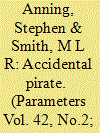

|
|
|
| 2 |
ID:
090983
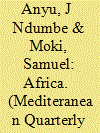

|
|
|
|
|
| Publication |
2009.
|
| Summary/Abstract |
The authors contend that the pervasiveness of piracy on the African coasts is threatening global security. Within Somalia, it is causing a disruption of food supplies, fostering internal conflict, and increasing the prices of basic commodities. Globally, it is orchestrating a dramatic rise in maritime insurance premiums and maritime insecurity, disrupting international commerce, increasing the possibility of an environmental disaster, and encouraging a nervous, emerging relationship with terrorism. Piracy must be stopped. To achieve this objective, the authors recommend revamping the international law on piracy, maintaining adequate coastal security along the hot spots on the African coasts, using military force, establishing safe maritime lanes, training crews on security measures, stationing armed guards on ships, and most importantly, reestablishing political stability in Somalia.
|
|
|
|
|
|
|
|
|
|
|
|
|
|
|
|
| 3 |
ID:
015989


|
|
|
| 4 |
ID:
017157


|
|
|
| 5 |
ID:
014402
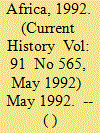

|
|
|
| 6 |
ID:
087411
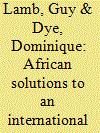

|
|
|
|
|
| Publication |
2009.
|
| Summary/Abstract |
Between 1998 and 2002, Africa was the region with the highest number of major armed conflicts compared on average eight distinct major armed conflicts each year during this five year period. These conflicts brew in the eastern region of the Democratic Republic of Congo, the Darfur region of Sudan and Somalia. The existence of armed non-state groups in the Central African Republic, Chad, Nigeria, as well as the high levels of firearms crime and violence in urban centers in Kenya and South Africa remains a critical humna security concern.
|
|
|
|
|
|
|
|
|
|
|
|
|
|
|
|
| 7 |
ID:
083083
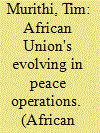

|
|
|
| 8 |
ID:
130221
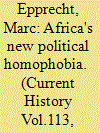

|
|
|
|
|
| Publication |
2014.
|
| Summary/Abstract |
Uganda has a population problem. The United Nations forecasts that the number of people living there will surpass the combined populations of Germany, Italy, and Japan by the end of this century-growing to 205 million in an area about the size of Oregon. It is hard to imagine how this will help with Uganda's
current poverty problem. The nation ranks 161st in the world in the UN's Human Development Index. Having deployed troops in Somalia and South Sudan and suffered terrorist attacks in the capital city, Kampala, Uganda also has a security problem. This partly explains the harassment and repression of the press and civil society groups by a government that is increasingly intolerant of any dissent.
|
|
|
|
|
|
|
|
|
|
|
|
|
|
|
|
| 9 |
ID:
103423
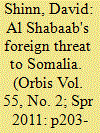

|
|
|
|
|
| Publication |
2011.
|
| Summary/Abstract |
This article focuses on the threat to Somalia by al Shabaab (The Youth), an extremist organization that controls most of southern and central Somalia. It learned its strategy and tactics from al Qaeda and the Taliban and relies heavily on a relatively small number of foreign fighters, most of whom are Somalis with foreign passports from the large Somali diaspora. The non-Somali contingent probably numbers only about 200 to 300, although it brings battlefield experience from Afghanistan and Iraq and provides al Shabaab with expertise in bomb making, remote-controlled explosions, suicide bombing and assassinations. Some of the foreigners occupy key positions in al Shabaab. The connection between al Shabaab and al Qaeda is growing stronger but has not yet reached the level of operational control by al Qaeda. Al Shabaab's draconian tactics, which are imported from outside and are anathema to most Somalis, and its foreign component may be its undoing.
|
|
|
|
|
|
|
|
|
|
|
|
|
|
|
|
| 10 |
ID:
111892
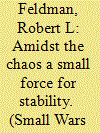

|
|
|
|
|
| Publication |
2012.
|
| Summary/Abstract |
Though parts of Somalia appear mired in intractable conflict, both domestic and foreign trade continues. As a result amidst the conflict, corruption, and chaos Somalia's business community is a small force for peace and stability. Thus, efforts directed at enhancing the business community, possibly via the Transitional Federal Government or its successor, could play a small role in improving the situation in this strategically poised country with a very entrepreneurial population. However, such success is far from certain, and numerous other factors besides a strengthened business community would have to occur for Somalia even to begin the journey on the long road to recovery.
|
|
|
|
|
|
|
|
|
|
|
|
|
|
|
|
| 11 |
ID:
165974
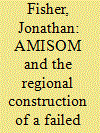

|
|
|
|
|
| Summary/Abstract |
Somalia, for many analysts, is the paradigmatic ‘failed state’, as well as the site of numerous external interventions since 1991. However, while early interventions were designed and directed by international actors, more recent peace operations have been led by regional states. The current African Union Mission in Somalia, AMISOM, has been presented by its supporters and financiers as a novel ‘African solution’ to a putative ‘African problem’. This article seeks to challenge analyses of AMISOM and other African peace operations that contrast ‘international’ approaches with ‘local’ or ‘African’ approaches, focusing instead on the region as a unit of analysis. In doing so, the study uses archival and interview data to interrogate how regional politico-military elites have viewed Somalia, their role within it and the kind of political authority they have wished to see established there since the genesis of AMISOM. The article finds that regional elites have sought to use AMISOM to impose a particular version of statehood on Somalia, based in both neo-Weberian institutionalist theory and their own domestic political experiences. This has entailed not only the rejection of central manifestations of Somali political authority but also the regional construction of Somalia itself as a failed state.
|
|
|
|
|
|
|
|
|
|
|
|
|
|
|
|
| 12 |
ID:
072216
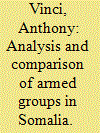

|
|
|
| 13 |
ID:
071695
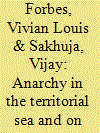

|
|
|
| 14 |
ID:
173837
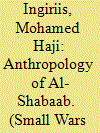

|
|
|
|
|
| Summary/Abstract |
Harakaat Al-Shabaab Al-Mujaahiduun (henceforth Al-Shabaab) is an active insurgent group in southern Somalia battling against the foreign forces and foreign-backed Somali forces. Despite recruiting both in Somalia and in the diaspora, this insurgency movement continues to increasingly recruit more local Somali youth than diaspora Somalis or non-Somalis. This article suggests that Al-Shabaab solicits support from diverse youth who – due to a confluence of factors – join the insurgency movement in various ways. The article reveals how the movement’s methods are flexible insofar as it skilfully recruits both powerful clans and marginalised clans. This pattern tests the limits of the Somali federal government in Mogadishu who have yet to develop innovative approaches to challenge and contain Al-Shabaab. The government failure not only allows Al-Shabaab to successfully carry out its operations but also to sustain itself in the midst of local communities. Through interviews with former Al-Shabaab youth, the article explores youth recruiting efforts and finds that the militant movement pursues various sophisticated means to lure numerous youth into its ranks.
|
|
|
|
|
|
|
|
|
|
|
|
|
|
|
|
| 15 |
ID:
111887
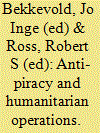

|
|
|
|
|
| Publication |
Norway, Norwegian Institute for Defence Studies (IFS), 2012.
|
| Description |
79p.
|
|
|
|
|
|
|
|
|
|
|
|
Copies: C:1/I:0,R:0,Q:0
Circulation
| Accession# | Call# | Current Location | Status | Policy | Location |
| 056491 | 359.03/BEK 056491 | Main | On Shelf | General | |
|
|
|
|
| 16 |
ID:
148062
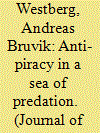

|
|
|
|
|
| Summary/Abstract |
How do anti-piracy forces engage with the coast of Somalia? Several studies have criticised the navies for being ineffective and stumbling in their fight against pirates and in their engagement with local communities. Somali sentiments are reportedly coloured by considerable scepticism towards the international naval effort, not least due to a feeling of double standards towards foreign trawlers seen plundering the country's resources. This study investigates the naval–coastal nexus along the Somali coast by drawing on field research off- and onshore. It finds that anti-piracy forces’ presence have had a considerable impact on the decline in piracy. Moreover, naval–coastal engagement and cooperation run deeper than is commonly perceived. While grievances against illegal fishing are widespread, examination of the fishing sector reveals a significant amount of predation committed by local stakeholders. Competition for fishing sector rents, particularly over distribution of licences, occurs on the local, regional and national levels. Bonds between some pirates, smugglers and officials threaten coastal community development and undermine their security. This study concludes that Somalia's maritime predatory trap can only be broken when former pirate villages are engaged as equal partners in the regional blue economy.
|
|
|
|
|
|
|
|
|
|
|
|
|
|
|
|
| 17 |
ID:
106612
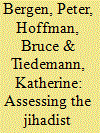

|
|
|
|
|
| Publication |
2011.
|
| Summary/Abstract |
Al Qaeda and allied groups continue to pose a threat to the United States. Although it is less severe than the catastrophic proportions of a 9/11-like attack, the threat today is more complex and more diverse than at any time over the past nine years. Al Qaeda or its allies continue to have the capacity to kill dozens, or even hundreds, of Americans in a single attack. A key shift in the past couple of years is the increasingly prominent role in planning and operations that U.S. citizens and residents have played in the leadership of Al Qaeda and aligned groups, and the higher numbers of Americans attaching themselves to these groups. Another development is the increasing diversification of the types of U.S.-based jihadist militants, and the groups with which those militants have affiliated. Indeed, these jihadists do not fit any particular ethnic, economic, educational, or social profile. Al Qaeda's ideological influence on other jihadist groups is on the rise in South Asia and has continued to extend into countries like Yemen and Somalia; Al Qaeda's top leaders are still at large, and American overreactions to even unsuccessful terrorist attacks arguably have played, however inadvertently, into the hands of the jihadists. Working against Al Qaeda and allied groups are the ramped-up campaign of drone attacks in Pakistan, increasingly negative Pakistani attitudes and actions against the militants based on their territory, which are mirrored by increasingly hostile attitudes toward Al Qaeda and allied groups in the Muslim world in general, and the fact that erstwhile militant allies have now also turned against Al Qaeda. This article is based on interviews with a wide range of senior U.S. counterterrorism officials at both the federal and local levels, and embracing the policy, intelligence, and law enforcement communities, supplemented by the authors' own research.
|
|
|
|
|
|
|
|
|
|
|
|
|
|
|
|
| 18 |
ID:
114834
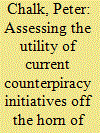

|
|
|
|
|
| Publication |
2012.
|
| Summary/Abstract |
This article examines the current international response to piracy and armed robbery off the Horn of Africa (HoA). It first describes the measures that are presently in place before going on to assess the relevance of these responses, both in terms of serving as a viable deterrent and in the context of addressing the root causes driving armed maritime crime in this part of the world. The article concludes by offering some tentative recommendations on how best to improve the regime of antipiracy in the HoA, focusing on capacity-building, the development of sub-regional maritime security arrangements, incentives to better engage the shipping industry in mitigation efforts and micro socioeconomic development projects in coastal regions of Somalia that support piracy.
|
|
|
|
|
|
|
|
|
|
|
|
|
|
|
|
| 19 |
ID:
086154


|
|
|
|
|
| Publication |
2009.
|
| Summary/Abstract |
Seven years ago, in his State of the Union address on Jan. 29, 2002, U.S. President George W. Bush warned of an "axis of evil" that was engaged in assisting terrorists, acquiring weapons of mass destruction, and "arming to threaten the peace of the world." In Bush's telling, this exclusive new club had three members: Iran, Iraq, and North Korea. Bush's policy prescription for dealing with the axis of evil was preemption, and just over a year later he put this doctrine into action by invading Iraq.
|
|
|
|
|
|
|
|
|
|
|
|
|
|
|
|
| 20 |
ID:
125281
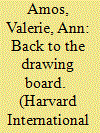

|
|
|
|
|
| Publication |
2013.
|
| Summary/Abstract |
Disasters are not only increasing in number, they are becoming more complex as natural and man-made crises combine to cause mega-disasters. Rapid urbanization, population growth, political unrest, and migration have created fragile environments in many countries, and boundaries are blurring between complex emergencies and chronic vulnerability in places such as the Democratic Republic of the Congo and Somalia. These factors have resulted in intense pressure on the UN's humanitarian organizations and partners to respond more quickly when disaster strikes and to be more effective in its response.
|
|
|
|
|
|
|
|
|
|
|
|
|
|
|
|
|
|
|
|
|